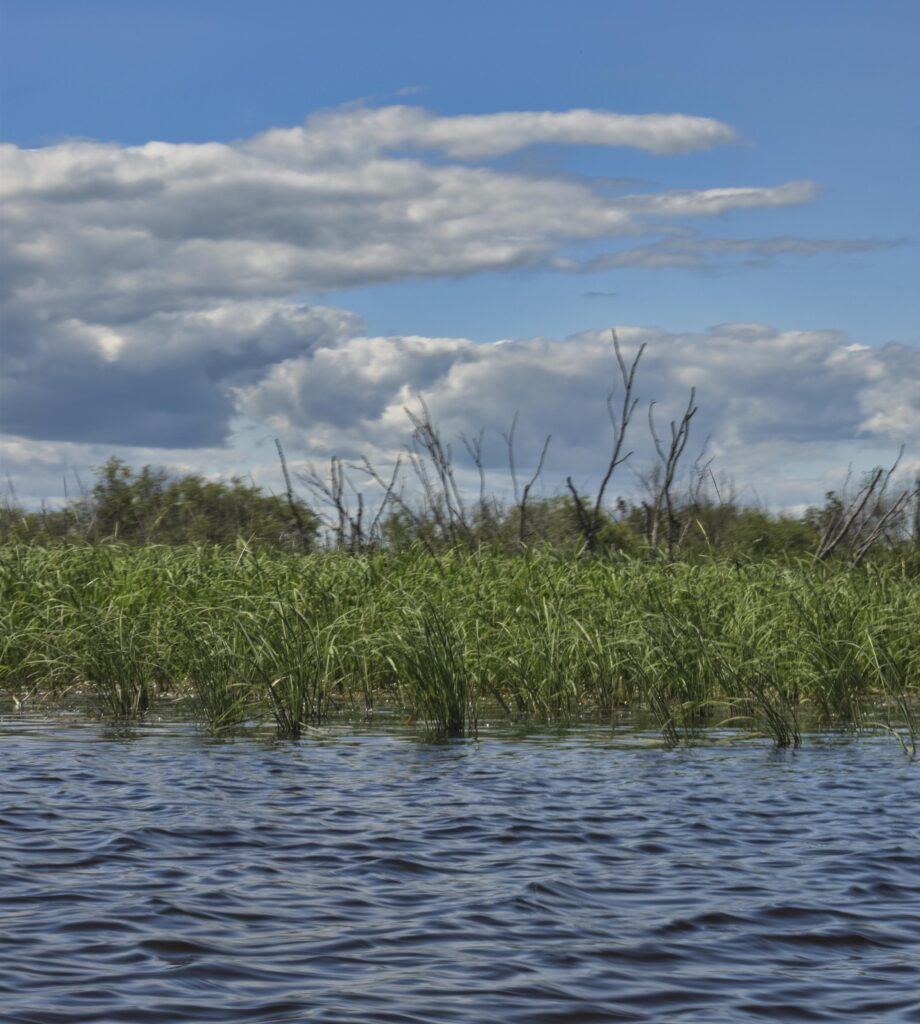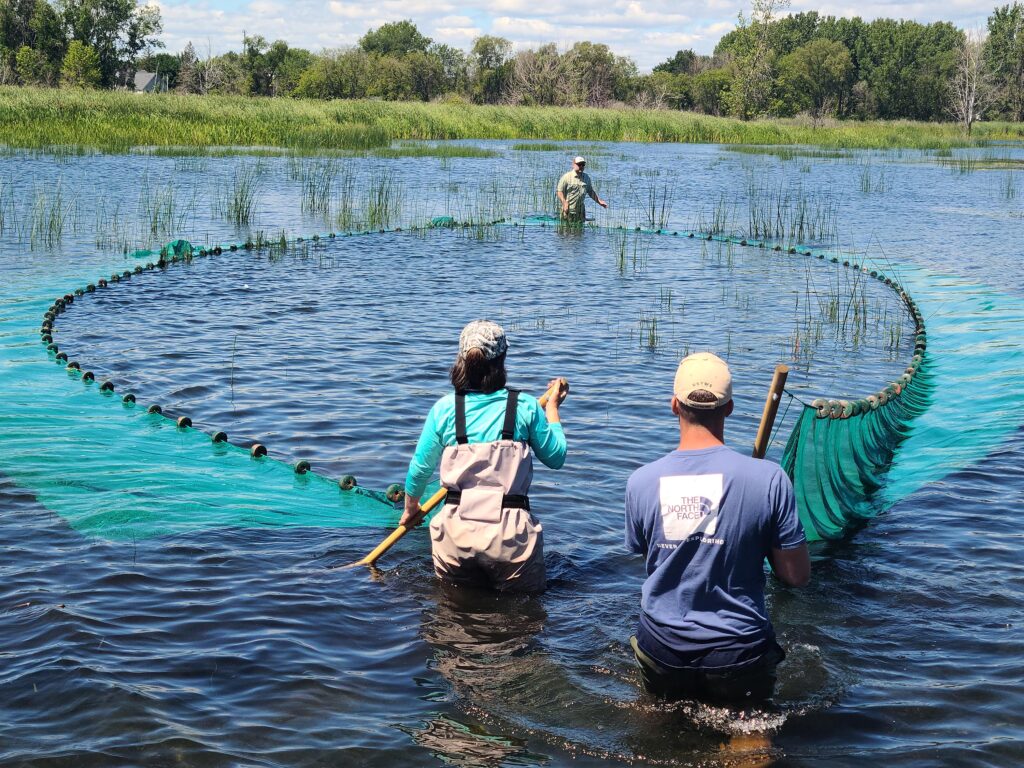Tossing seeds and measuring fishes

A wild rice stand on the Peshtigo River. Image credit: Marie Zhuikov, Wisconsin Sea Grant
The calendar has flipped to 2024. Our staff members are already tackling new projects. Before they move too deeply into the new year, however, some staff members took a moment to retain the glow of their favorite 2023 project. Titus Seilheimer, fisheries outreach specialist, shared his thoughts.
Call it manoomin (the “good berry”). Call it wild rice. Call it Zizania. Whatever you call it, it is a great plant species! My favorite group of projects from 2023 revolves around wild rice restoration along the west shore of Green Bay and in several rivers in Manitowoc County.
Hundreds of years ago, wild rice was abundant in the Great Lakes region, from what is now Milwaukee Harbor to all over Green Bay. Development and settlement led to declines in habitat and water quality, and associated declines in wild rice. Wild rice is an important staple for the Indigenous people of the region, with the Menominee named for it, “People of the Wild Rice.”

Titus Seilheimer (far side) and Amy Carrozzino-Lyon (left) and her crew use a seine net to capture fish for counting in a Green Bay wetlands near Marinette. Image credit: Marie Zhuikov, Wisconsin Sea Grant
For the second year, I have worked with Amy Carrozzino-Lyon, a professor at UW Green Bay. Amy leads the wild rice restoration project in Green Bay. We have been looking at fish use and fish assemblage in locations with and without wild rice in Green Bay coastal marshes. We had a great team this summer of college students (Sea Grant summer outreach scholars), high school students (Freshwater Collaborative of Wisconsin funding through UW-Green Bay) and colleagues. We set nets and pulled seines. We waited out a storm in the back of the truck and had some great times on the water.
As the weather cooled, we also planned for seeding wild rice, which is an annual plant. Although the seeds are ripe and harvested in late August to early September, seeding success is better later in the season. This keeps hungry migratory waterfowl and other species from chowing down on all the seed. We stored the rice seed underwater until late October to early November.
I helped the UW-Green Bay team with educational seeding events with the Great Lakes Explorers and the Menominee Indian High School. I also planned seeding in various ponds and habitats at Woodland Dunes Nature Center in Two Rivers. We seeded about an acre on a snowy day and the team at Woodland Dunes seeded another three acres in the West Twin River on a better weather day. We also seeded an acre of marsh in the Little Manitowoc River.
It was a great year for wild rice projects for the Manitowoc Field Office! Now, the long winter-wait to see how much germinates in the spring.
The post Tossing seeds and measuring fishes first appeared on Wisconsin Sea Grant.
Blog | Wisconsin Sea Grant
https://www.seagrant.wisc.edu/blog/tossing-seeds-and-measuring-fishes/
